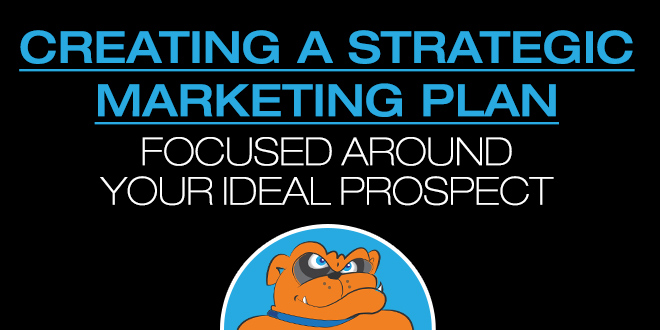
Sadly most small businesses don’t have a client profile, which prevents them from making a reliable strategic marketing plan.
How much are you spending on a marketing plan to reach people who will never buy?
Most businesses believe that anyone who uses their type of product(s) or service(s) is a prospect. When asked who was his ideal prospect a dentist responded “anyone who has teeth.” In the broadest sense his statement is true but this dentist happens to specializes in cosmetic dentistry and not everyone with teeth is interested in or can afford cosmetic service.
His “ideal” prospect is different from “anyone who has teeth.”
Odds are his marketing efforts, which for a dentist often includes direct mail, circulars, a website with a blog and print publications, feature cosmetic dentistry but also include a laundry list of every other service he provides. This is because his message is going to “everyone with teeth” rather than to that demographic who is interested in his high margin cosmetic dentistry service.
How much more effective would his marketing program become if he could send a cosmetic dentistry message just to people who have an interest in cosmetic services? By zeroing in on the ideal customer profile rather than shotgunning the population the dentist can dramatically increase his conversion rate.
So how do you figure out what your ideal target customer profile is?
The first rule in developing your profile is to not let your prejudices play a role. You may have been in business for 15 years and have what you think is a “sound grasp” of what your perfect profile is but don’t assume you are correct without corroboration.
To determine what your perfect customer profile looks like try using data you already have in your business that tells a story. Try digging into your list of existing customers; it’s host treasure trove of marketing information, it’s just a question of mining it correctly. In the case of the dentist he can research his billing information and determine who has purchased cosmetic services over the past few years. That information will yield a name, address and contact information and that’s the start of his perfect customer list. Other businesses may have to rely on segmented mailing lists or a CRM but the first step is to identify existing customers who have purchased your lead product or service.
Once you have a list you’ll want to look for commonalities. One way to do this is by collecting surveys from your customers. At a minimum your survey should include:
- An incentive to complete it. Offer a discount on the next purchase or a flat cash award.
- Assurances that their information is for private use only.
- Date of birth
- Gender
- Zip code
- Family income range
- How did they first learn of your business (provide options and make sure you include referrals)
This is a first step. From the results of this survey you can then understand what to focus your message on. You’ll have a better ideas about the demographics of your “perfect customer” is and you can focus on marketing to that group specifically in order to increase in conversions in your marketing efforts. This survey also can tell you who your customer advocates are and you may want to start a referral award program to recognize them.
The time you spend doing the research to develop a strategic marketing plan focused on determining the perfect customer profile will be well worth it. You’ll be rewarded with a higher conversion rate and a much higher lifetime value of a customer. I suggest you swap out that shotgun for a rifle with a sniper scope by using an effective strategic marketing service.
Want to embed this infographic on your website?

